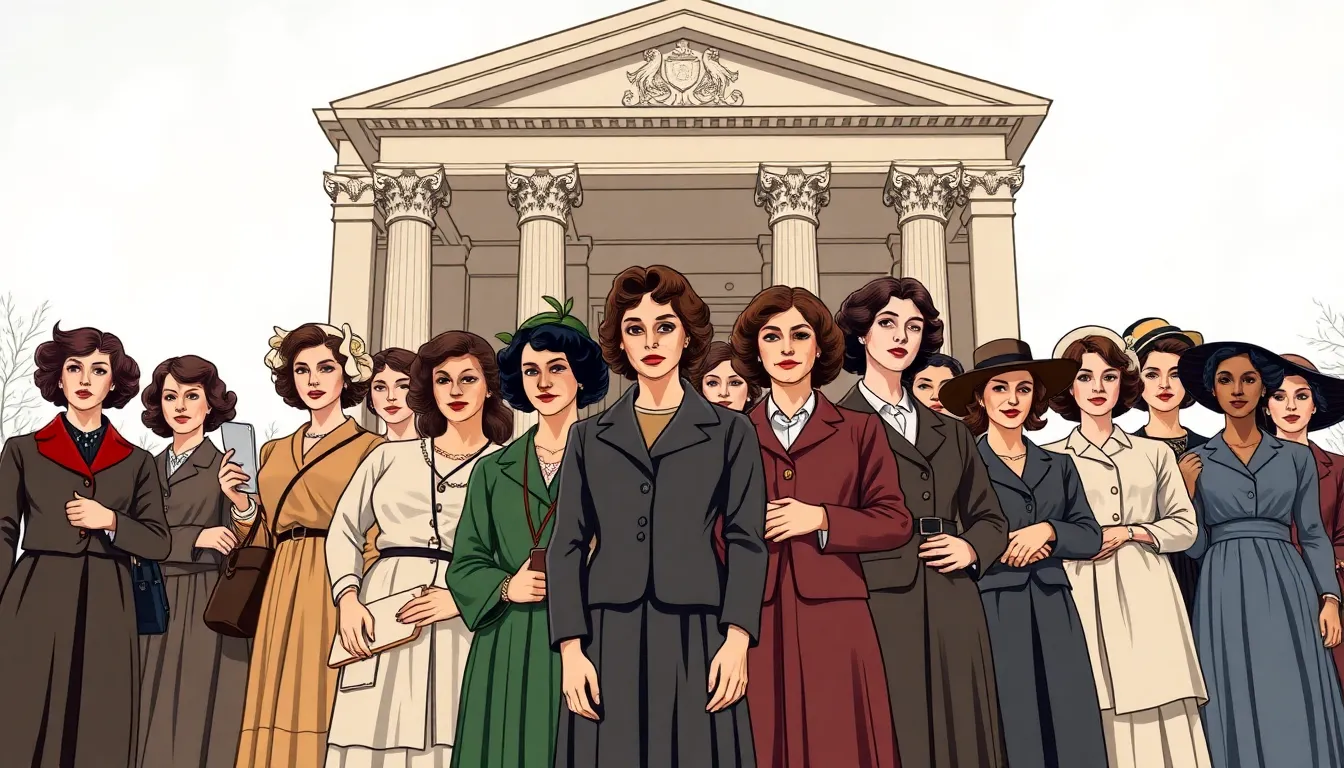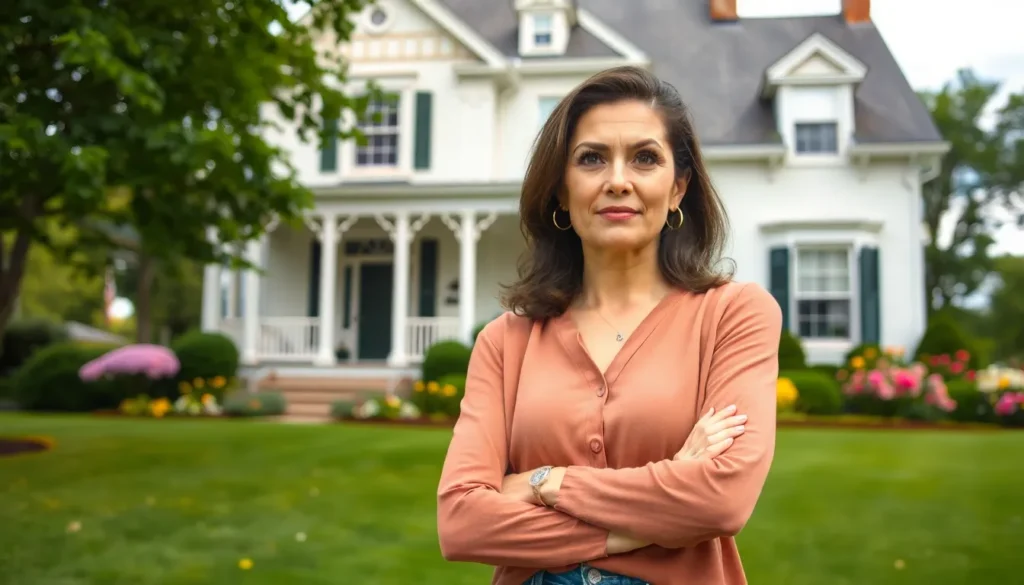Table of Contents
ToggleThroughout history, the idea of women owning property has been as elusive as a cat in a game of hide-and-seek. From ancient civilizations to modern times, societal norms often kept women from claiming their rightful stake in land and assets. Imagine a world where women were told they couldn’t own a house, a plot of land, or even a potato! It’s hard to believe, but that was reality for many.
Historical Context of Property Ownership
Historically, the struggles women faced regarding property ownership showcased the limitations imposed by societal norms. Various civilizations demonstrated how ingrained beliefs influenced women’s rights to own land and assets.
Ancient Civilizations
In ancient Egypt, women held significant rights to own property. They could inherit land, manage estates, and engage in contracts independently. This position contrasted sharply with other ancient societies, where women often lacked these privileges. Similar trends appeared in Mesopotamia, where legal codes allowed women to possess property, albeit with restrictions based on marital status. Access to ownership in these civilizations exemplified a more progressive stance compared to other regions.
Medieval Period
The medieval period presented a mixed landscape for women’s property rights. Noble women occasionally inherited land through their fathers, especially if they had no male heirs. However, this ownership typically depended on marriage, as many laws restricted women’s rights to manage property independently. In contrast, peasant women worked alongside men on shared land, but ownership rights remained elusive. Customary laws dictated that, even if women cultivated land, they often could not claim ownership of it, thus reinforcing gender inequalities in property rights.
Legal Milestones

Legal milestones reflect significant changes in women’s property rights. Throughout history, various legal systems have influenced these rights.
English Common Law
English common law established the doctrine of coverture. Under this doctrine, a woman’s legal identity merged with her husband’s upon marriage. She could not own property independently, nor could she control her earnings. Some exceptions existed in the form of separate property agreements, but these were rare. Changes began with the Married Women’s Property Acts of the 19th century, allowing women to own and manage property in their name. Specifically, the 1882 Act enabled married women in England to retain their earnings and inherit property. These reforms marked a shift towards greater autonomy and legal recognition of women’s rights.
American Property Laws
American property laws historically mirrored the principles of English common law. In many states, women faced similar restrictions under coverture. However, changes started emerging after the passage of state-specific laws in the late 19th century. The 1848 Seneca Falls Convention emphasized women’s rights, prompting legal changes. States like New York passed laws enabling married women to own and control property independently. By the early 20th century, most states enacted similar laws, further advancing women’s property rights. These legislative changes highlighted a growing recognition of equality in ownership and control of assets.
Social and Economic Factors
Social and economic factors significantly influenced women’s ability to own property throughout history. These elements shaped societal norms and legal frameworks that either supported or restricted women’s rights to property.
Impact of the Industrial Revolution
The Industrial Revolution created new economic opportunities that altered traditional gender roles. As factories expanded, many women entered the workforce, earning their own wages. This shift laid the groundwork for advocating property rights. Women began to challenge existing laws that restricted ownership. With increased financial independence, their calls for equal rights grew louder. The swelling presence of women in the workforce directly correlated with more significant demands for economic equality. Property ownership emerged as a critical issue, driving legislative changes in various regions.
The Role of Women’s Movements
Women’s movements played a crucial role in advancing property rights. Activists campaigned tirelessly to dismantle discriminatory laws. Their advocacy increased awareness about gender inequality in property ownership. Events like the Seneca Falls Convention galvanized support for women’s rights. Legislative milestones followed these movements, leading to pivotal changes in property laws. Over time, activism resulted in more comprehensive legal rights. Women’s struggles created a shift in public perception, leading society to recognize the importance of economic independence.
Contemporary Perspectives
Contemporary perspectives on women’s property ownership illustrate significant advancements and ongoing challenges in legal rights and societal acceptance.
Modern Property Ownership Laws
Modern property laws recognize women’s rights to own and manage property independently across many jurisdictions. In countries like the United States and the United Kingdom, various statutes support equal ownership rights, allowing women to inherit, purchase, and control property without restriction. Legislative changes, notably the Married Women’s Property Acts, established the foundation for these rights. Additionally, jurisdictions have adjusted legal frameworks to eliminate barriers based on marital status or gender, reinforcing the principle of equal property rights. For instance, laws enacted since the late 19th century across numerous states offer married women the ability to hold property in their names. These advancements signify the progress toward gender equality within property ownership.
Ongoing Challenges
Despite legal advancements, challenges persist that hinder women’s full property ownership rights in various regions. Cultural norms and societal bias still influence property ownership, creating disparities. Women in some areas face obstacles such as discriminatory practices or legislative gaps that affect their ability to inherit or secure property. In rural settings, customary laws may still disadvantage women, restricting access to land and housing. Additionally, economic factors exacerbate these challenges, as women often experience wage gaps that impact their purchasing power. Advocacy groups continue to work toward addressing these inequalities, focusing on promoting legislative reforms and raising public awareness about the importance of equitable property rights for women.
The journey toward women’s property rights has been long and fraught with challenges. While significant legal advancements have been made, the fight for true equality in property ownership continues. Many women still encounter obstacles that hinder their ability to own and manage property effectively.
Ongoing advocacy and awareness are essential in addressing these disparities and ensuring that women everywhere can claim their rightful place in property ownership. As society evolves, it’s crucial to remain vigilant in promoting equitable rights and dismantling the barriers that persist.




